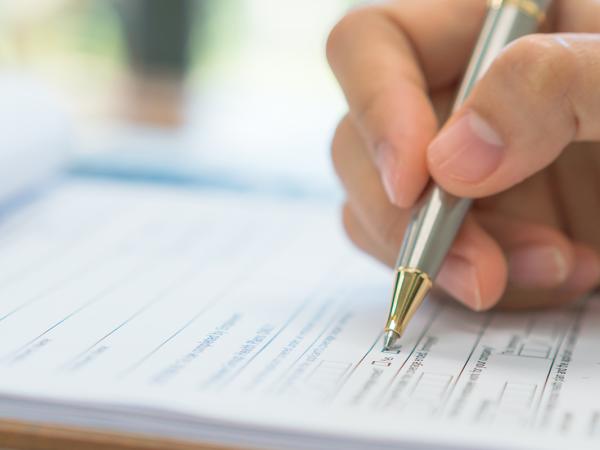Tax refunds
These pages tell you how to claim back overpaid tax from HM Revenue & Customs (HMRC) and what the time limits are for making such a claim.

Content on this page:
Types of refund
Claiming back a straightforward overpayment of tax should usually be easy enough to do yourself. But exactly how you do it depends on the type of income you have.
If you have paid too much tax, or ‘overpaid’ tax, and you complete a tax return, HMRC should send you a repayment once they have processed your tax return. For more information see the page self assessment tax refunds.
If you do not complete a tax return, you can still claim back overpaid tax. We provide additional information in the following specific situations:
- you have overpaid tax through PAYE on wages or pension
- you have overpaid tax under the Construction Industry Scheme
- you have overpaid tax on savings income
- you can claim a refund because you are eligible for the Marriage Allowance
- you have overpaid tax in relation to a PPI payout
If you want information on refunds of overpaid or incorrectly paid National Insurance contributions (this is rare), go to our National Insurance page.
Note that it is possible to claim tax relief when you make certain investments. For example, the Enterprise Investment Scheme (EIS) provides tax relief to investors who invest in certain smaller, unquoted, trading companies. Income tax relief is given at 30 per cent on the cost of new EIS share investments. We do not consider such tax relief further in these pages. However, please see the warning in our guidance about companies using individual’s Government Gateway login credentials to submit tax returns containing apparently inappropriate claims for such tax relief.
Paying too much tax
If you receive employment income or pension income and pay tax through the Pay As You Earn (PAYE) system you may sometimes pay too much tax. There are various reasons for this. We discuss this more in our page PAYE tax refunds.
Identifying a tax overpayment
To work out accurately if you have paid too much tax, you will have to work out your tax liability and compare this to how much tax you have paid.
To start with, you will need to gather all the information about your income and tax position. This may include the following documents for the tax year:
- P60 and/or P45 from your employer(s) or pension provider(s)
- P11D from your employer, if you receive taxable benefits-in-kind
- Details of taxable state benefits received
- Bank statements (or certificates of tax deducted from certain types of interest income)
- Building society statements (or certificates of tax deducted from certain types of interest income)
- Statements showing how much statutory interest has been paid as part of a PPI claim and the tax deducted from that interest
- Dividend certificates
- Details of rental income and expenses.
For more information on the types of records and documents that you need to work out your income and tax position, see our page Tax: keeping records.
Calculating your tax liability
To work out your tax liability, you first need to calculate your taxable income. You must include the gross amounts in your calculation, that is, the amounts before tax is taken off.
You may be able to deduct certain expenses or claim allowances against your gross taxable income.
You need to calculate your tax liability using the correct rates of tax, and you can then deduct the tax you have already paid, for example, under Pay As You Earn (PAYE), to work out your tax overpayment or underpayment.
We set out an example tax calculation and explain the steps involved in calculating your tax liability on our page Working out your tax.
If you live in Scotland and are a Scottish taxpayer, different income tax rates and bands apply to your non-savings and non-dividend income. There is more information in our section on Scottish income tax. UK rates and bands apply to your savings and dividend income.
Deadlines
You have four years from the end of the tax year in which the overpayment arose to claim a refund, as shown below. If a claim is not made within the time limit you will lose out on any refund that may be due and the tax year becomes 'closed' to claims.
- Tax year 2020/21 (year ended 5 April 2021): claim by 5 April 2025
- Tax year 2021/22 (year ended 5 April 2022): claim by 5 April 2026
- Tax year 2022/23 (year ended 5 April 2023): claim by 5 April 2027
- Tax year 2023/24 (year ended 5 April 2024): claim by 5 April 2028
In cases of ‘official error’, HMRC might agree to issue repayments for years prior to 2020/21 under their ‘Extra-statutory Concession B41’. For more information on this concession, see below.
If you miss the deadline
If you think you have overpaid tax in tax years that are ‘closed’ to claims, there is a rule known as Extra-statutory Concession B41 which can allow HMRC to repay tax for those earlier years.
This concession only applies in situations where HMRC or another government department, such as the Department for Work and Pensions, have made an error in your tax affairs and where there is no doubt about the facts of the case.
The relevant part of the concession reads as follows:
‘...repayments of tax will be made in respect of claims made outside the statutory time limit where an over-payment of tax has arisen because of an error by HMRC or another Government Department, and where there is no dispute or doubt as to the facts...'
In our experience, it is rare for HMRC to grant this concession so you will need to set out clear evidence, as to what the error was which resulted in you paying too much tax.
We have produced an example letter that you can use to write to HMRC regarding a B41 repayment, see our page on PAYE tax refunds.
Timescales
It usually takes somewhere between 5 days and 8 weeks to receive your tax refund. It will depend on a number of factors, including the system involved (for example by PAYE or self assessment), whether you applied online or by paper; and whether HMRC make any security checks during the process.
For example, if you have recently submitted a self assessment tax return that shows a refund, then the refund should be paid (usually – but not always – in accordance with your payment instructions), once the tax return has been processed.
A tax return submitted online takes less time to process than a tax return submitted by paper. You should be aware that sometimes tax return refunds can be delayed while security checks are carried out.
If you have received a P800 calculation and it shows a refund, then usually you can go into your Personal Tax Account (PTA) or the HMRC app and ask HMRC to pay it directly into your bank account via BACS (which takes 5 working days). If you do not do this within 21 days, HMRC should send you a cheque, which should arrive within six weeks of the date on your P800.
HMRC’s guidance says that if you are not given the option to have the P800 refund paid directly into your bank account, then you’ll get a cheque within 14 days.
If you have applied to HMRC for a tax refund outside of the self assessment system, for example, because you are due some tax relief on your employment expenses, then HMRC will issue your tax refund, by cheque, once they have processed your form.
Again, if your form was submitted online (for example, via your PTA), this is likely to take less time to process than if you sent in a paper copy form – usually paper forms take around six weeks for HMRC to receive and process. Please note, even if your form was completed and submitted online, HMRC will still issue your refund by cheque rather than make a BACS transfer.
You should be aware that HMRC will not make payments to overseas bank accounts. See our guidance for further information on how to get your refund if you have left the UK.
Scams
HMRC will never contact you via email, text, WhatsApp or phone call to tell you about a tax refund.
If you receive such a communication, purporting to be from HMRC, then it is a scam or ‘phishing’.
Phishing is when someone sends a fake communication, pretending to be from a legitimate organisation (in this case, HMRC). They are designed to steal personal and financial details or deliver malware to your computer.
Signs of a scam email
- poor spelling and grammar
- wording which unduly stresses that urgent action is required
- lack of a specific greeting like ‘Dear Hannah Greene’
- incorrect ‘From’ addresses – Government e-mails sent from the Government Secure Intranet (GSI) take the format name@[department].gov.uk. Note however that sometimes phishing emails can include the official hmrc.gov.uk ending or something like it.
If you receive a scam email
Do
- keep calm
- forward the email to HMRC ([email protected]) to help them stop these scams
- if you are unsure if the message is genuine – contact HMRC via one of their phone lines
Do not
- reply to the email
- click on any links
- download any attachments
Reporting scams
Emails
Forward any phishing or scam emails you receive or are suspicious about, to the HMRC phishing team.
Text messages
HMRC do not contact people about tax refunds via text message. Note that although the Government uses technology to identify fraudulent text messages and stops them being delivered, some will still get through.
Scam texts may display ‘HMRC’ as the sender rather than a phone number, to make them appear legitimate.
As with the scam emails, do not reply to the message and do not click on any links.
If you think you have received a scam text message from HMRC, forward it to 60599 (network charges apply) or email [email protected].
WhatsApp messages
Take a screenshot of the WhatsApp and send it to the HMRC phishing team at [email protected].
Phone calls
Report any phone calls online using HMRC’s Report a suspicious HMRC phone call service.
Clicking on a scam link
If this happens, you might be taken to a site where you are asked to update or to verify your personal and financial information. This may include your date of birth, login information, account details, credit card or PIN numbers. Or you may start the process of downloading malware onto your computer putting your data and information at risk of theft, loss, attack or damage.
Disclosing personal details
If you think this might have happened, you should take the following action:
- Contact [email protected], and include brief details of what you disclosed – for example, name, address, Government Gateway User ID, password, etc.
- Do not give your personal details in the email.
- Contact your bank and explain the situation as they may be able to offer advice on what, if any, action can be taken.
For further information about the different kinds of online scams and links to advice on online safety visit our page Tax: protecting yourself online.
Watch our video on scam refund emails or texts:
Security checks
HMRC routinely check that self assessment tax refund claims are genuine. Their systems use risk assessments. If HMRC’s systems suggest your claim may not be genuine, they will contact you by letter, asking you to confirm your identity. This does not mean you have done anything wrong. It is important that you respond to HMRC though.
If HMRC want to check your identity, they will normally (but not always) send you an initial letter. This letter explains that they believe your Unique Taxpayer Reference (UTR) may have been used to submit a potentially fraudulent repayment claim.
If you receive this initial letter and you submitted a self assessment repayment claim, you should telephone HMRC within 30 days. There should be a telephone contact number on the letter.
It is important that you contact HMRC, otherwise they will cancel the repayment claim and close down your self assessment record and UTR.
Sometimes HMRC do not send this initial letter. Instead, they just send you the second letter.
If you telephone HMRC after receiving the initial letter, they will send you the second letter. The second letter asks you to provide evidence of your identity and to complete a questionnaire.
It is important to respond as requested to HMRC’s letter.
If you are uncertain about any of the requests in the letter or need extra support, you should contact HMRC.
More information
HMRC have a tax checker tool, which can help you work out if you are due a repayment of tax. This is a useful tool for you if your tax position is straightforward. It may not give an accurate result if your tax position is more complex, for example, if you receive taxable state benefits. If you do use the HMRC tool, you must read the guidance carefully first. This explains who can use the tax checker tool and what information to gather.
You can read the whole of Extra-Statutory Concession B41 on GOV.UK.
You can use HMRC’s Where’s my reply tool to check how long you are likely to have to wait for a tax refund.
HMRC’s website contains some useful information on avoiding and reporting internet scams and phishing. This includes a page listing genuine contacts, a page of example scams including phishing emails and a page on how to recognise different tax scams.



